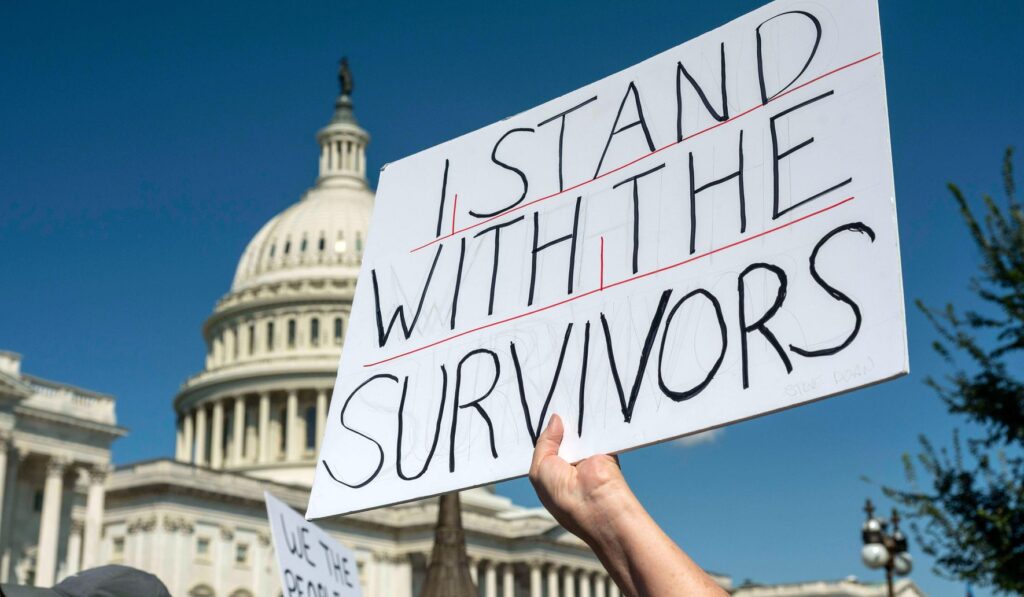A federal judge has asked the Justice Department to provide information on what materials are subject to protection and how it will protect victims of the deceased sex offender Jeffrey Epstein as documents are reviewed.
The court’s request puts the spotlight on how sensitive evidence and records from the Jeffrey Epstein matter will be handled going forward. Judges often demand clear plans when victims’ privacy and safety are at stake. This step signals scrutiny over procedures for sealed files and restricted materials.
The judge asked the Justice Department to identify which materials should remain shielded from public view. That includes exhibits, filings, and any records that could reveal the identities of alleged victims or witnesses. The focus is both on legal privilege and on practical protections.
Protecting victims means more than redacting names on paper. Judges expect a regime of safeguards that covers access lists, secure storage, and strict handling rules for electronic files. The court wants to know how the DOJ will enforce those safeguards in practice.
Courtroom secrecy is balanced against public interest in transparency, and that balance is often fraught. The judge’s inquiry reflects a need to justify limited access rather than assume secrecy by default. This approach forces agencies to explain why protection is necessary and how harms will be minimized.
One immediate concern is who will be allowed to view sealed materials. Common limits include vetted attorneys, designated court personnel, and investigators with court permission. The judge can demand logs of who accessed what and when to ensure accountability.
Another key issue is digital security. Sensitive files can be copied or leaked if electronic controls are weak, so the DOJ may be asked to describe encryption, audit trails, and secure portals. Courts increasingly expect technical measures to match legal restrictions.
Victim notifications and consent procedures are also central to the judge’s questions. Courts look for mechanisms that inform victims about filings that could affect their privacy, and they weigh whether victims have a chance to object to disclosure. That process protects rights and respects victim autonomy.
Redaction practices matter too, since poorly executed redactions can leave identifying clues. Judges evaluate not only whether names are removed but whether context still reveals identities. Effective redaction requires careful review by trained personnel.
Sealed criminal exhibits and grand jury materials have different legal standards than civil case records, and the judge will likely ask the DOJ to clarify which rules apply. Statutory protections, case law, and local rules all play a role in determining what stays hidden. The court needs a roadmap to navigate those layers.
There is also the question of timeline: how long should protections last? Temporary seals may be appropriate until a victim’s safety can be ensured, but indefinite secrecy raises transparency concerns. The judge may press the DOJ for a schedule of review and potential unsealing.
Safety concerns extend beyond privacy to physical protection when disclosure could lead to harassment. Courts consider whether identification could expose victims to threats, and agencies must explain how they will mitigate those risks. Protective measures can include confidentiality orders tied to criminal penalties.
The DOJ’s plan may include a mix of legal tools like protective orders, non-disclosure agreements, and limitations on copies. Courts often require detailed protocols, and the judge’s request is an invitation to lay those protocols out in writing. That makes enforcement simpler if violations occur.
Transparency advocates often challenge overbroad secrecy, arguing that the public has a right to know how the justice system handled significant matters. The judge must weigh those challenges while respecting victims’ privacy and safety. Clear, tailored protections can satisfy both concerns more easily.
Past cases show judges expect specifics: who will redact, what technology will be used, who gets access, and what penalties attach to breaches. General assurances rarely suffice. The court’s demand for detail forces the DOJ to present concrete, enforceable steps.
The outcome of this inquiry could set a tone for how other sensitive files from high-profile cases are handled. Courts across the country watch how federal judges navigate the tension between secrecy and openness. The expectations set here could influence future requests for similar protections.
Once the DOJ responds, the judge may hold a hearing to test the plan and ask victims or their representatives to weigh in. Those proceedings can shape what stays sealed and what becomes part of the public record. The court retains authority to adjust protections based on the responses it receives.
Whatever the precise results, the immediate effect is procedural: the judge has put the DOJ on notice that detailed, enforceable measures are required. That process aims to protect individuals while preserving the integrity of the judicial record. The coming filings and judicial decisions will reveal how those competing demands are balanced.



